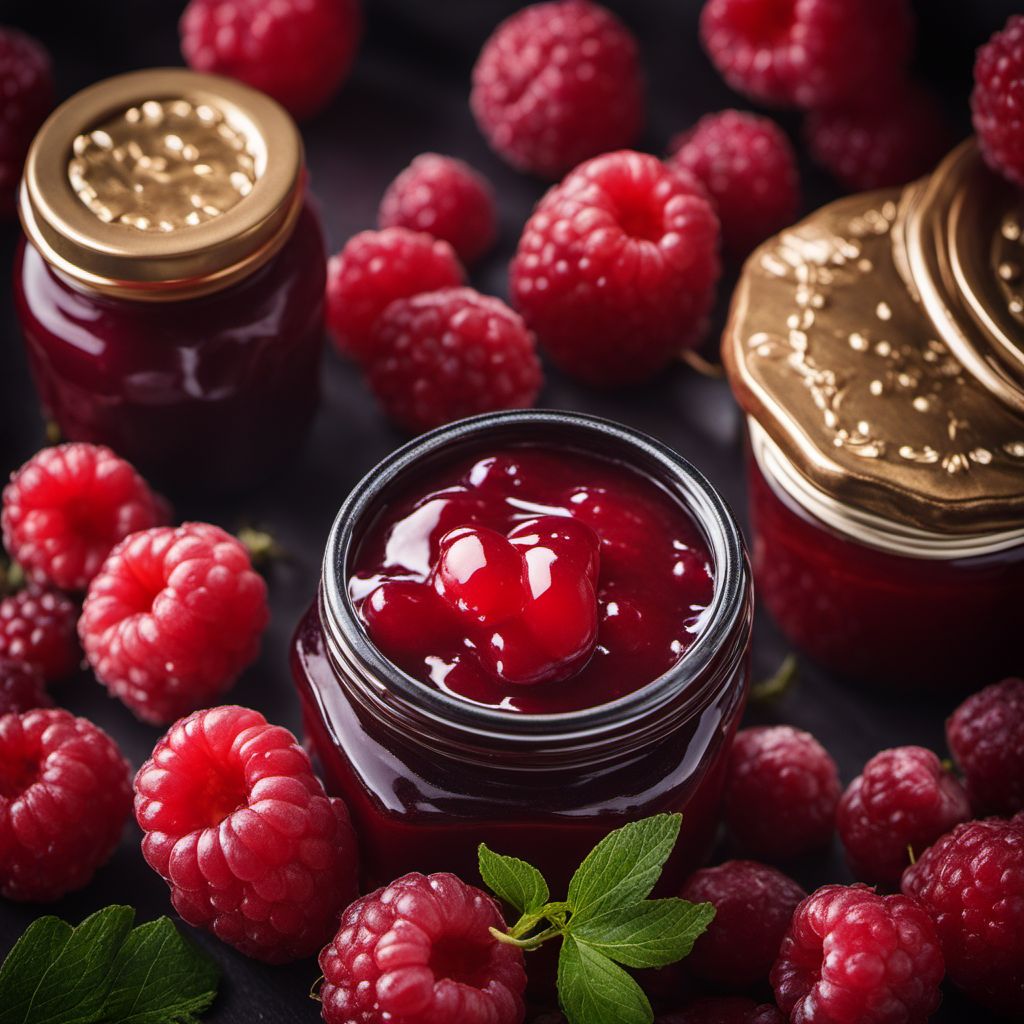
Ingredient
Jam, lingonberry
Tart and Tangy Delight: Exploring the World of Lingonberry Jam
Lingonberry jam has a vibrant red color and a thick, spreadable consistency. It possesses a tart and tangy taste with a hint of sweetness, making it a versatile ingredient in both sweet and savory dishes. This jam is commonly used as a condiment, spread, or filling in pastries, sandwiches, and desserts.
Origins and history
Lingonberries are native to Northern Europe, particularly Scandinavia, and have been enjoyed for centuries in traditional Nordic cuisine. Lingonberry jam holds cultural significance in these regions and is often served alongside meat dishes, pancakes, and Swedish meatballs. It is also a popular ingredient in Finnish, Swedish, and Norwegian cuisine.
Nutritional information
Lingonberry jam is a good source of vitamin C and antioxidants. It is also low in calories and fat, making it a healthier alternative to some other fruit preserves. However, it is important to consume it in moderation due to its sugar content.
Allergens
There are no known allergens associated with lingonberry jam.
How to select
When selecting lingonberry jam, look for reputable brands or artisanal producers that use high-quality lingonberries. Check the ingredient list to ensure that the jam does not contain any artificial additives or excessive amounts of sugar. Opt for organic or all-natural options if available.
Storage recommendations
To maintain the freshness and quality of lingonberry jam, store it in a cool, dark place such as a pantry or cupboard. Once opened, refrigerate the jam to prolong its shelf life. Ensure that the jar is tightly sealed to prevent air or moisture from affecting the jam's texture and flavor.
How to produce
Amateurs can produce lingonberry jam at home by cooking lingonberries with sugar and lemon juice until they reach a thick, jam-like consistency. The jam can be stored in sterilized jars for future use. Lingonberries can also be foraged or purchased from specialty stores or farmers' markets for homemade jam production.
Preparation tips
Lingonberry jam can be enjoyed as a spread on toast, pancakes, or waffles. It can also be used as a filling in pastries, such as tarts or turnovers. Additionally, lingonberry jam pairs well with savory dishes like meatballs, roasted meats, and cheese platters, adding a tangy and sweet element to the overall flavor profile.
Substitutions
Cranberry jam or cranberry sauce can be used as a substitute for lingonberry jam, as they share similar tart and tangy characteristics. However, the flavor profile may differ slightly. Lingonberry jam has a more pronounced tartness compared to cranberry jam.
Culinary uses
Lingonberry jam is commonly used in Scandinavian cuisine, particularly in Sweden, Finland, and Norway. It is often served alongside traditional dishes like Swedish meatballs, reindeer meat, and pancakes. Lingonberry jam is also a popular ingredient in desserts, pastries, and sauces.
Availability
Lingonberry jam is commonly available in Northern European countries, such as Sweden, Finland, and Norway. It can also be found in specialty stores or online retailers that offer a wide range of international food products.
More ingredients from this category » Browse all

Jam, strawberries
"The Sweet Symphony of Strawberry Jam"

Jam, mandarins
Tangy Citrus Delight: Exploring the World of Mandarin Jam

Jam, oranges
Tangy Citrus Delight: Exploring the World of Orange Jam

Jam, mixed fruit
"A Symphony of Fruity Delights: Exploring the World of Mixed Fruit Jam"

Jam, sour cherry
Tangy Delight: Exploring the World of Sour Cherry Jam

Jam, blueberries
Bursting with Blueberry Bliss: The Delightful World of Blueberry Jam
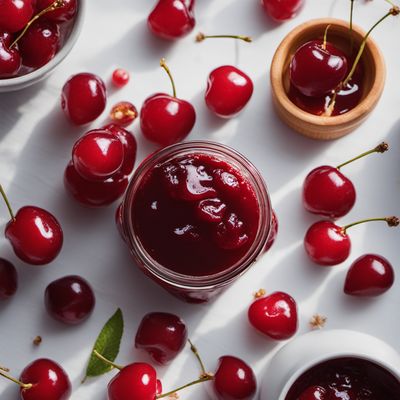
Jam, sweet cherry
"The Luscious Delight: Exploring the Sweetness of Cherry Jam"

Jam, apricots
The Sweet Preserve

Jam, plums
The Sweet Preserve

Jam, cranberries
Tart and Tangy Delight: Cranberry Jam
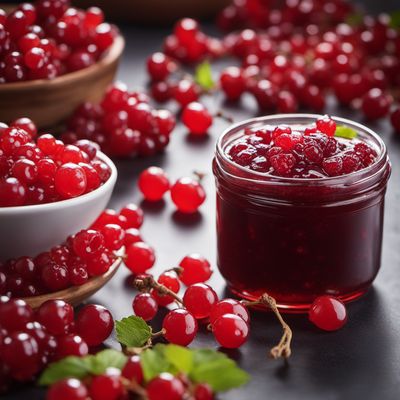
Jam, currants (red)
"Tart and Tangy Delight: Exploring the Vibrant World of Red Currant Jam"
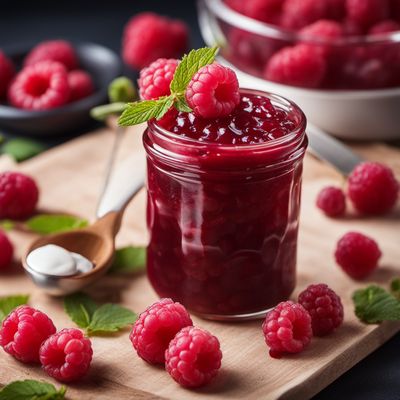
Jam, raspberries
The Essence of Summer
Recipes using Jam, lingonberry » Browse all

New Nordic Chocolate Chip Cookie
Nordic Delight: Dark Chocolate Chip Cookie with Lingonberry Twist
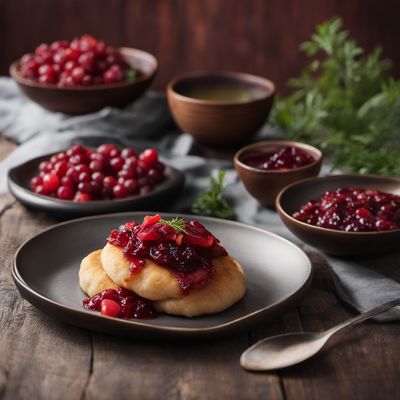
Swedish Potato Dumplings with Bacon and Lingonberry Jam
Savory Swedish Delight: Potato Dumplings with Crispy Bacon and Tangy Lingonberry Jam

New Nordic Apple Pie
Nordic Apple Galette: A Modern Twist on a Classic American Dessert

New Nordic-Style Pizza
Nordic Fusion Pizza: A Modern Twist on a Classic

Silvanas with a Nordic Twist
Nordic-Inspired Silvanas: A Delicate Meringue Cookie Sandwich

New Nordic Spring Rolls
Nordic Twist on Classic Chinese Spring Rolls

Swedish-style Foie Gras with Lingonberry Sauce
Nordic Delight: Lingonberry-infused Foie Gras

Carne Asada Tacos with a New Nordic Twist
Nordic-Inspired Carne Asada Tacos: A Fusion of Flavors

Finnish-style Pericana
Savory Finnish Pericana: A Fusion of Spanish and Nordic Flavors

Smoked Sheep's Head with Traditional Norwegian Accompaniments
Norwegian Delicacy: Smoked Sheep's Head with Authentic Flavors

New Nordic Guacamole
Nordic Avocado Delight

New Nordic Bibimbap
Nordic Fusion Bowl: A Twist on Traditional Bibimbap